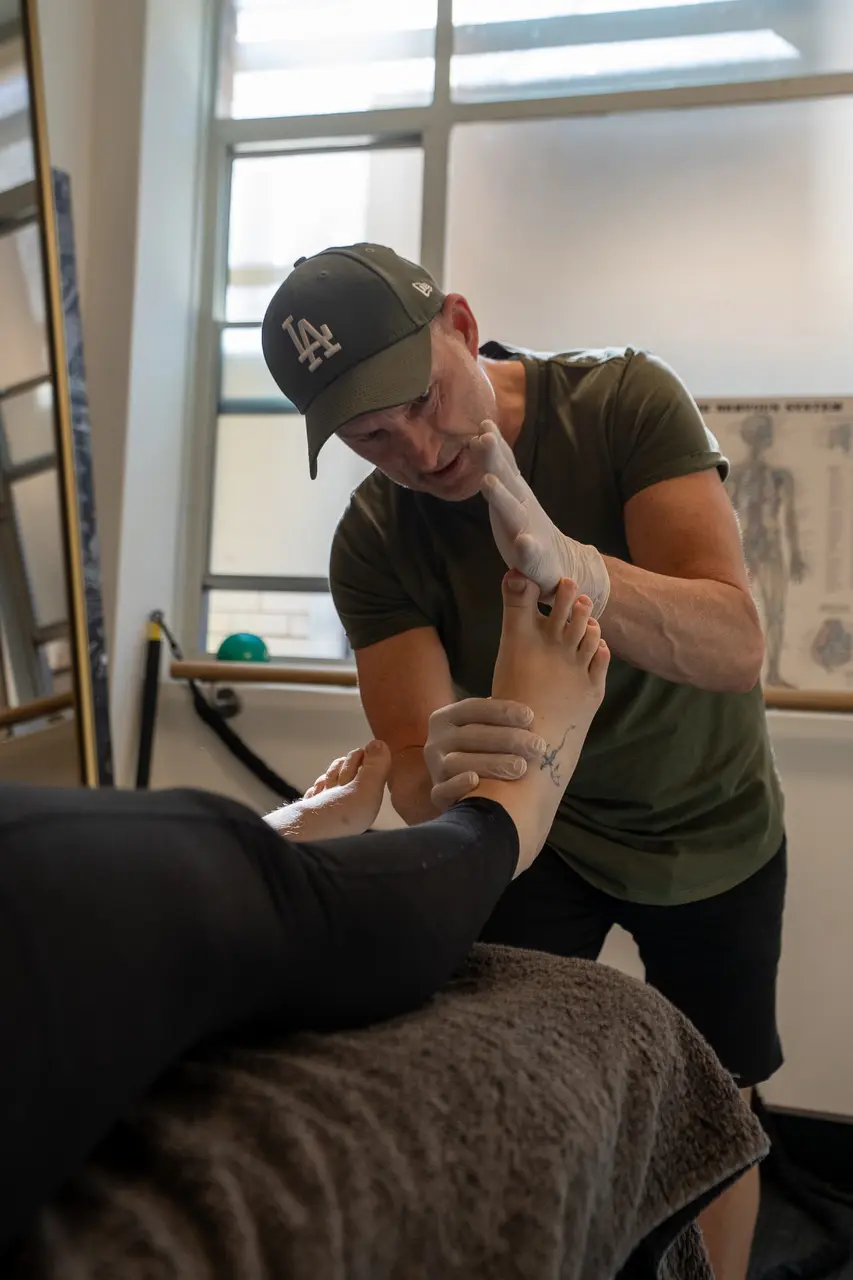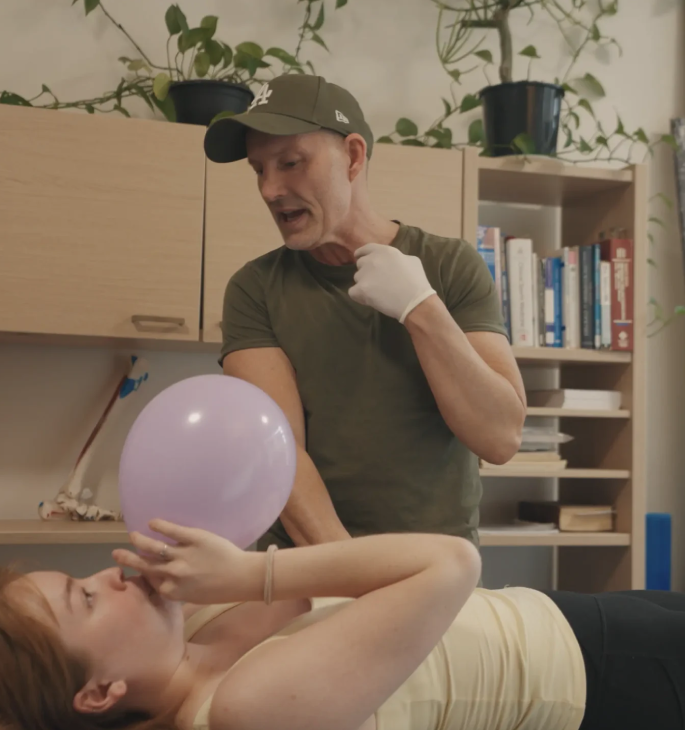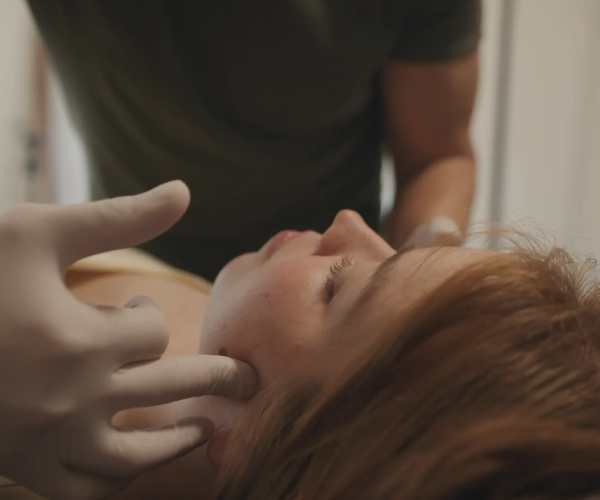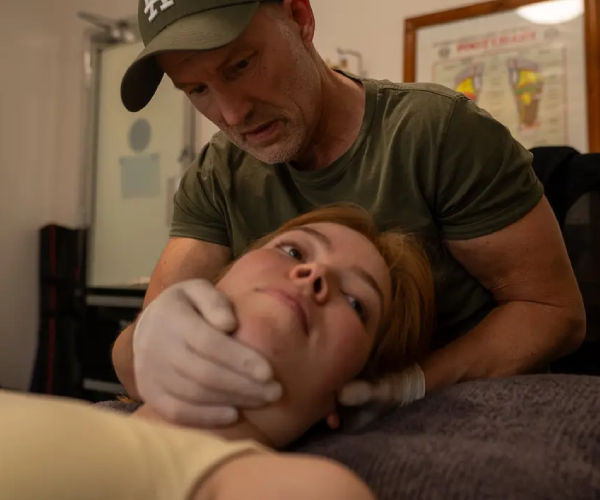Your assessment
A detailed assessment to uncover what is really happening in your body.
Looking at the
bigger picture
I do not begin treatment until I have thoroughly examined every aspect. It’s essential for me to see the complete picture. The key issue may arise from a past trauma, repetitive strain, or dysfunction in a critical area. Static posture, gait and balance often give the best indication of the status of the sensorimotor system.

What your
assessment may include
Your assessment is completely non-invasive, safe, and designed to put you at ease. Nothing should feel painful. I move at your pace and make adjustments if you feel any discomfort. I’ll talk you through each step so you know what’s happening and why. You’ll gain a lot of insight into how all the systems of your body work together as one. The goal is to help you feel supported, not stressed, while I uncover what your body needs to heal and perform at its best.

First, we'll have a detailed chat about your history.
If you can walk, I’ll assess your walk and help you make improvements.
Next, I’ll look at how you move while standing with some basic movement tests. For example, how do you squat or lunge?
Then, we’ll go through any subtle improvements to your movement to help you improve comfort and performance. This will help you move better and train better so you can strengthen and support your body. Plus, it will stop you from doing any movements that are making your pain worse. Which is often the case that I see.
Next, I’ll do some further movement testing and look for any signs that need to be addressed such as swelling, discomfort. If you have any discomfort during the tests, we’ll make a note to address this during treatment. This will include some neurological tests which will assess how well you can respond to different requests such as resisting pressure.
Your assessment will also include consideration of your breathing. This will provide me with indications on how your respiratory system is working.
Your assessment determines your treatment.
Overall, I’ll assess you as a whole person—how you feel, how you breath, or how inflamed you organs might be gives me a accurate assessment of your overall health. How you move and more. Your pain is not the only measure of what’s going on its a symptom of much more.
Comprehensive testing helps me understand exactly what I need to do to treat you. After your treatment, I’ll reassess you and see the improvements.
Book your assessment
My philosophy
I stand apart because I actively draw inspiration from everyone. I embrace all viewpoints, and I recognise the value in each of them.
Many original thinkers become too self-centred, which limits their ability to see beyond their own perspectives. This narrow-mindedness ultimately undermines or significantly weakens their school of thought.”
I recognise that many things I learned in the past have been proven wrong but have served me well. It’s crucial to understand that what you teach, and practice today must be open to modification and correction as new information emerges.
Maintain an open mind toward new knowledge, even if it challenges your previous beliefs and teachings. Adaptation is essential for growth and accuracy in our understanding.


Why your muscles stay tight and why stretching doesn’t fix it
If you’ve been stretching tight muscles for an extended period, it’s time to face the facts: the tightness isn’t from the muscles. Your body tightens muscles as a protective response to deeper issues, often related to imbalances in the skull, inner ear, or jaw joint. When these systems are off, your brain signals your muscles to tighten for stability. Stretching may provide temporary relief, but it won’t fix the root cause. For lasting relief, focus on rebalancing the head, jaw, and inner ear. Once your brain feels safe and stable, the tightness will likely disappear on its own.
